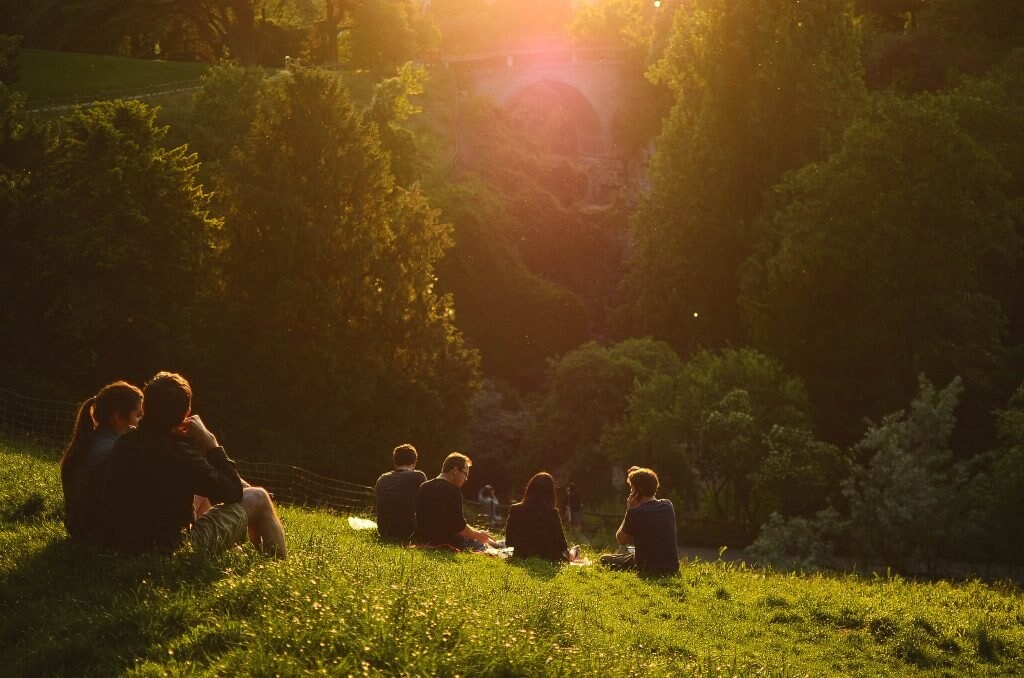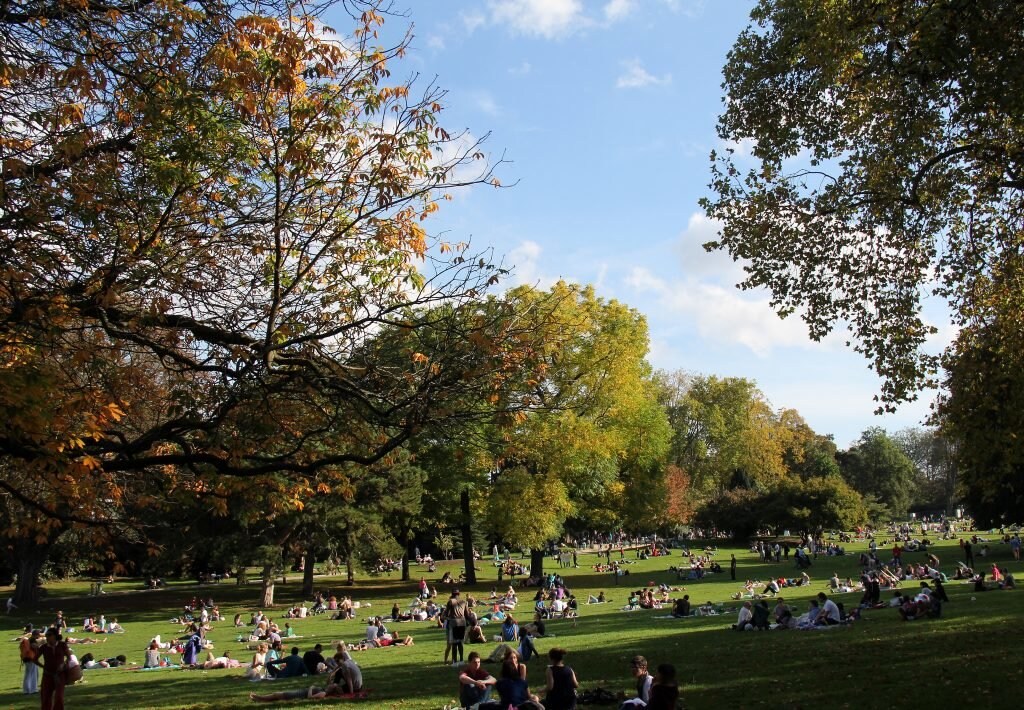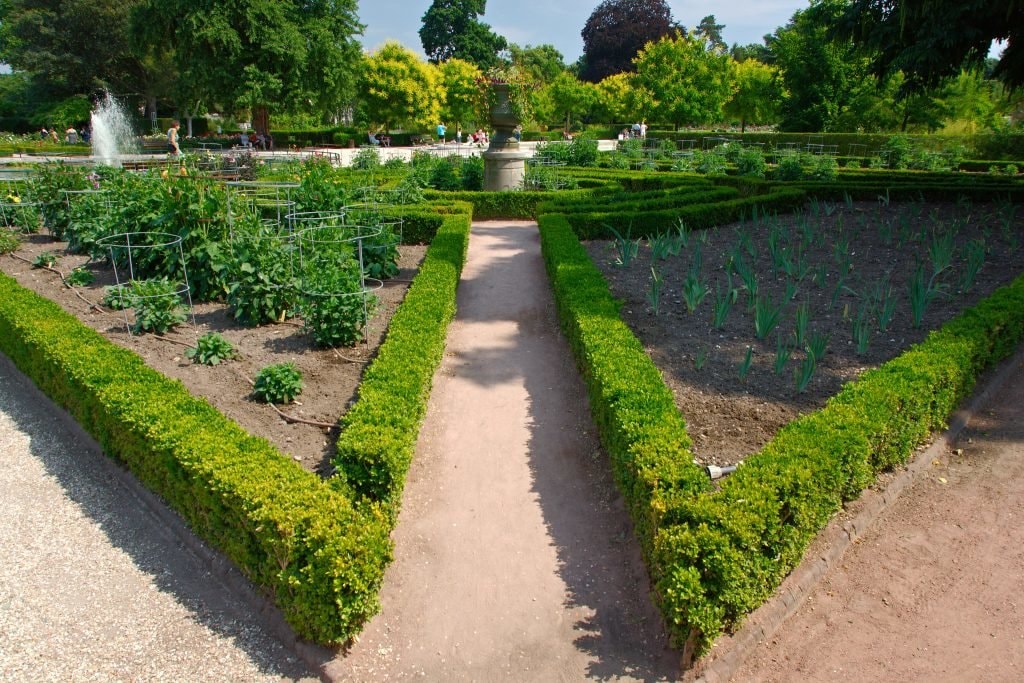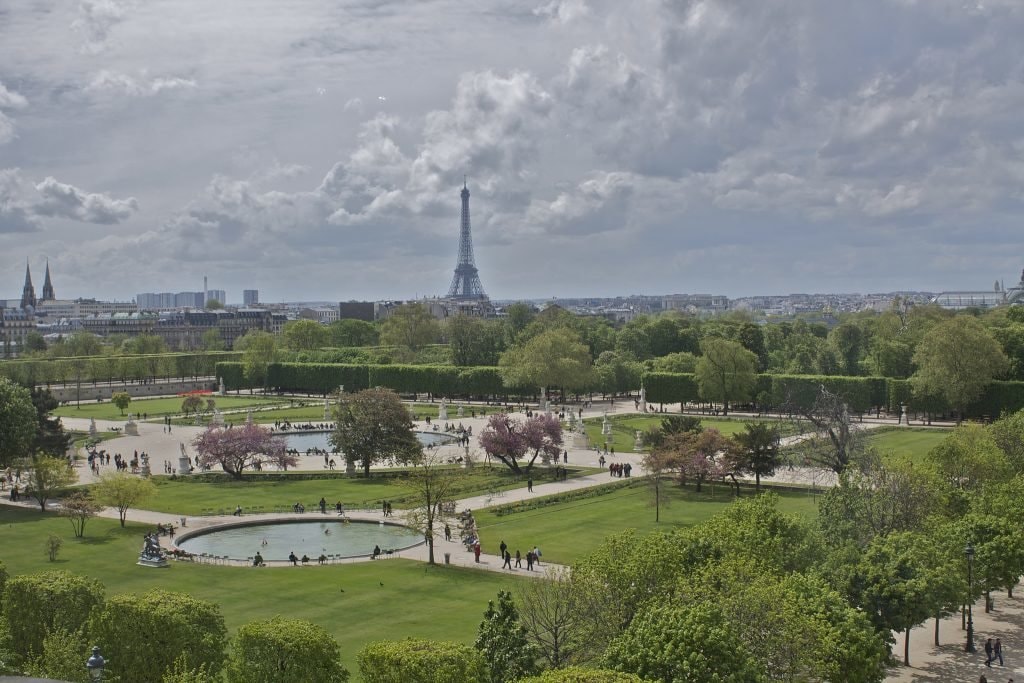The 5 Best Parks in Paris
“Paris’ monuments and museums draw some big crowds, but some of Paris’ most overlooked attractions are its myriad parks, the ideal destinations for strolling, picnicking, people-watching, and more. While every neighborhood in Paris has its own park or green space, here are five that are worth wandering to. And once you’ve explored these beautiful parks, make sure to check out Expedia’s 72-hour guide to Paris for more on what to do in the city.

Parc des Buttes-Chaumont
The Buttes-Chaumont Park is a bit off the beaten path, in the 19th arrondissement, but it’s well worth the trek. The 61-acre park is the fifth largest in Paris, dating all the way back to the Second Empire in 1867. The park is most famous for the Temple of the Sybil at the top of the cliff on the Belvedere Island in the centre of the park, which overlooks the artificial lake and is connected to the rest of the park by two bridges. The park also boats a grotto, a vestige of the old gypsum and limestone quarry, with a beautiful artificial waterfall hidden within. Buttes-Chaumont is one of the most popular amongst locals, particularly for picnicking, though the park also has a restaurant, a modern guinguette called Rosa Bonheur, where you can grab a bite to eat.

Montsouris
Montsouris is the southern answer to Buttes-Chaumont, and was built at the same period in the 14th arrondissement. The park contains many of the same aspects as Buttes-Chaumont, including a lake, waterfall, and different trees and flowers throughout. The park also boasts very wide, sloping grassy areas and a traditional puppet theater. Montsouris is a very popular park with joggers, particularly students, given the proximity of the Cité Universitaire right across the street, and while it’s a local hotspot, it remains mostly untouched by tourists.

Jardin des Plantes
Not far from the Pantheon and the Latin Quarter is the Jardin des Plantes, the main botanical garden in Paris, with about 4500 plants arranged by family on a 10,000 square meter plot. The rose garden, built in 1990, is one of the park’s most popular elements amongst visitors, with hundreds of species of roses to discover. The park is also home to four of the galleries of the National History Museum as well as a small zoo, which was originally founded in the 18th century with animals of the Royal Menagerie at Versailles. If you prefer outdoor activities that are more about discovery than lounging about, this is definitely the park to visit.
Ranelagh
Ranelagh Park is not on many people’s radar; it’s a relatively simple and small garden that is nonetheless worth the trek to the mostly residential 16th arrondissement. First and foremost, it affords an excellent look at what a typical neighborhood park in Paris is like for locals, with green spaces allowing for picnicking and playing football. It’s also a great park for families with children, affording a play area complete with a carousel and one of the best marionnette shows in Paris in the early afternoon. The park is also adjacent to the Musée Marmottan, a former private home housing one of Paris’ best impressionist collections, which is well worth a visit.

Tuileries
The Tuileries are one of the most popular parks in Paris for art buffs, given their proximity to the Louvre and their design, boasting several statues from France’s national collection (including several by Rodin). Originally the gardens of the Tuileries Palace, created by Catherine de Medici in 1564, the Tuileries are now buttressed on either side by the Louvre Museum and the Place de la Concorde. Within the Grand Carré, which was designed by Versailles designer André Le Nôtre, you’ll find a large basin surrounded by chairs for relaxing, and there’s a café where you can purchase snacks to enjoy. But perhaps the main draw of the Tuileries is the Musée de l’Orangerie, a building that was formerly used to grow citrus trees and which has now been converted into a museum that is home to several of Claude Monet’s large-scale water lily paintings.
Of course, these are just some of the 421 parks in Paris – take a stroll and discover your own favourites.”
More Articles With City break
Finding wheelchair-accessible things to do in London can often be a tricky task, but a new app makes it a lot easier.
Ready for your next great holiday? To help you prepare, we’ve created a simple travel checklist to make sure you’ve covered the essentials.
We rounded up 18 locals-only secrets in some of the world’s most beloved cities to help you feel like an insider, no matter where your travels take you.
Top travel tips from Jake Graf: a couples guide to London
The ultimate whatever-the-weather London staycation guide